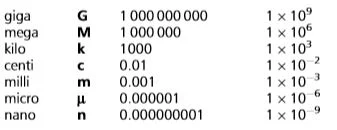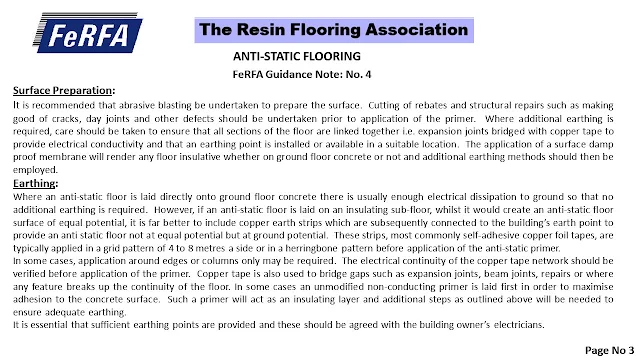To many people, static electricity is little more than the shock experienced when touching a metal doorknob after walking across a carpeted room or sliding across a car seat. However, static electricity has been a serious industrial problem for centuries. Every imaginable business and industrial process has issues with electrostatic charge and discharge at one time or another. Munitions and explosives, petrochemical, pharmaceutical, agriculture, printing and graphic arts, textiles, painting, and plastics are just some of the industries where control of static electricity has significant importance. The age of electronics brought with it new problems associated with static electricity and electrostatic discharge. And, as electronic devices become faster and smaller, their sensitivity to ESD increases. Today, ESD impacts productivity and product reliability in virtually every aspect of the global electronics environment. Sparks due to static electricity in operating theaters may cause ignition of spirits, or explosion. Also the small electric shocks received from these sparks may cause minor mishaps. To prevent the buildup of static electricity, the whole operating area is maintained at earth potential by the use of flooring materials which provide a limited leakage path for electricity. Sometimes the whole floor is covered with an anti static rubber or plastic but satisfactory results can be obtained by the installation of seamless anti-static flooring system, though these may depend on a high relative humidity in the room. Since operating theaters are normally maintained at a relative humidity of 50-65%, this condition is normally met.
Let see some important points regarding ESD Or Anti static flooring:
As per ASTM F 150:
Note:
There is one more type of instrument is available in the market for testing:
For maintenance of floor, please visit: http://annayyachandrashekar.blogspot.in/2017/09/floor-types-and-maintenance.html
BS EN 2050 is withdrawn and replaced by BS ISO
2878:2005 and then 2009 and then 2011 and at currently 2017. In BS EN 2050, there was mentioned about
the requirement of ESD material for hospital and industries. But these table
are removed from the updated standard.
Based on BS EN 2050,
For industrial floors at explosive
handling area ESD limits are – min is 0 and max is 5X104
For industrial floors needs anti-static purpose area surface resistance shall be - min is 5X104 and max is 1X 108.
For hospital floors electrical resistivity shall be min is 5X 104 to max of 2X 106.
However, the suitable floor shall have based on requirement of client, floor needs to selected and after the installation, floor shall be tested and readings shall be verified to confirm that the readings are within the limits provided by the manufacturer’s specification.
Areas for Conductive/Static Dissipative Resilient Flooring Specially by Electrical Resistivity Range:
Super Conductive (1.0x10 to 1.0x10 to the 4th) areas with extreme chance of explosion
o Munitions plants and warehouses
o Chemical processing plants and warehouses
o Fireworks production factories and storage areas
Conductive (2.5x10 to the 4th to 1.0x10 to the 6th)
o Hospital OR still using flammable anaesthetics
o Extremely sensitive electronic and computer equipment in manufacturing assembly and test areas.
o Some clean rooms with extremely sensitive equipment
o Extremely sensitive telecommunication installation areas
o Medical diagnostic instrument areas with extremely sensitive instruments
Static Dissipative (1.0x10 to the 6th to 1.0x10 to the 9th)
o Electronic and computer equipment in manufacturing assembly and test areas.
o Computer or electronic equipment installation areas
o Clean rooms with sensitive equipment
o Telecommunication installation areas
o Medical diagnostic instrument areas with sensitive instruments
Based on the requirement of the client, the floor needs to selected and after the installation, the floor shall be tested and readings shall be verified to confirm that the readings are within the limits provided by the manufacturer’s specification.
Finally, most commonly asked question is: Do we need to install the copper strip in ESD flooring?
Answer is here in the FeRFA Guidance Note: No. 4, page No 3 as follows:
Areas for Conductive/Static Dissipative Resilient Flooring Specially by Electrical Resistivity Range:
Super Conductive (1.0x10 to 1.0x10 to the 4th) areas with extreme chance of explosion
o Munitions plants and warehouses
o Chemical processing plants and warehouses
o Fireworks production factories and storage areas
Conductive (2.5x10 to the 4th to 1.0x10 to the 6th)
o Hospital OR still using flammable anaesthetics
o Extremely sensitive electronic and computer equipment in manufacturing assembly and test areas.
o Some clean rooms with extremely sensitive equipment
o Extremely sensitive telecommunication installation areas
o Medical diagnostic instrument areas with extremely sensitive instruments
Static Dissipative (1.0x10 to the 6th to 1.0x10 to the 9th)
o Electronic and computer equipment in manufacturing assembly and test areas.
o Computer or electronic equipment installation areas
o Clean rooms with sensitive equipment
o Telecommunication installation areas
o Medical diagnostic instrument areas with sensitive instruments
Based on the requirement of the client, the floor needs to selected and after the installation, the floor shall be tested and readings shall be verified to confirm that the readings are within the limits provided by the manufacturer’s specification.
Finally, most commonly asked question is: Do we need to install the copper strip in ESD flooring?
Answer is here in the FeRFA Guidance Note: No. 4, page No 3 as follows:
Some of the Government projects follow the below mentioned testing standards for certification of the installed ESD flooring
1. Surface to ground and surface to surface resistance tests should be carried out once the installation is
completed. This will be compliant to ESO/ESD S.7.1standards for ESD floor. The instrument should be used Terk, USA make, and model: 152 with 5 pound testing and measuring cylindrical probes or
equivalent.
2. Total system resistance test as per EOS/ESD STM 97.1 standards also should be carried out.
3. Walking body voltage tests also should be carried out as per EOS/ESD STM 97.2 standards.
Which standard, which resistance?
A. Potentially explosive environments are covered by two European directives known as the ATEX (EXplosive ATmospheres) Directives:
1. ATEX 214 ‘equipment’ Directive 2014/34/EU – Equipment and protective systems intended for use in potentially explosive atmospheres.2. ATEX 137 ‘workplace’ Directive 1999/92/EC – Minimum requirements for improving the safety and health protection of workers potentially at risk from explosive atmospheres.
Floors in these environments should have the following Resistance to ground (Rg), when measured according to EN 1081 or IEC 61340-4-1:
Between 10^4 Ω and 10^6 Ω (below 5 x 10^4 Ω in special cases such as explosives manufacture)
B. ESD Protected Areas (EPAs), where electronic elements should be protected to prevent damage to equipment and to provide safety, are covered by the international specification IEC 61340-5-1 which says:
If flooring is not used to ground people handling electronically sensitive devices, Rg < 10^9 Ω.If flooring is used to ground people, different resistance measurements have to be specified and tested: person/footwear/flooring system Rg < 10^9 Ω and body voltage generation < 100 V.
C. Clean rooms, used for research or as production rooms for pharmaceuticals for instance, tend to have specifications that follow either ATEX or EPA guidelines.
Rooms with electrical installations, where people or livestock require protection from electrical shocks, require flooring with a minimum resistance set by IEC 60364 Electrical Installations for Buildings Part 4, section 41:
Rg > 50 kΩ, for a nominal voltage of the site < 500 V.Rg > 100 kΩ, for a nominal voltage of the site > 500 V.
For more info.. visit: https://blog.master-builders-solutions.com/en/antistatic-and-esd-flooring-standards-and-testing-methods












conductive flooring tile
ReplyDeleteThanks for useful information
ReplyDeleteKinetic Polymers is the best solutions provider for making your facility anti static products. Static charge can be highly detrimental to your facility and our job is to ensure that it doesn’t happen
Thanks for giving the Innovative information. nice blog Cementitious flooring in pune
ReplyDeleteVery useful article information on Basketball Court Flooring. Thanks for sharing. From Basketball Court Flooring Manufacturer
ReplyDeleteIndian Basketball Court Flooring Manufacturer
Polyurethane Concrete Systems provide superior thermal shock resistance, impact durability, and chemical resistance, making them ideal for extreme industrial conditions.
ReplyDeletehi
ReplyDelete